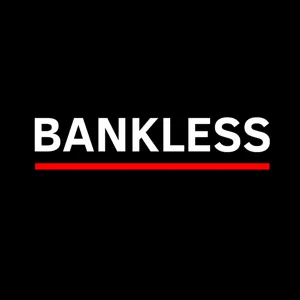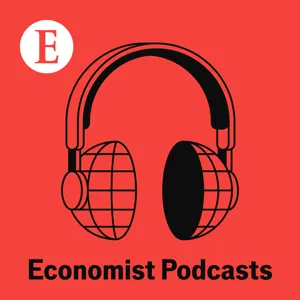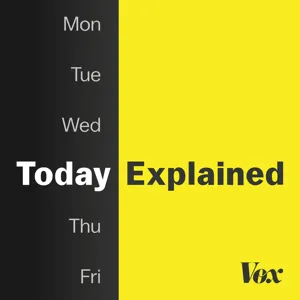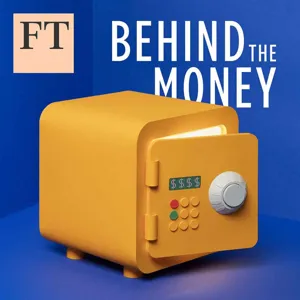CO2 utilization

Explore "carbon capture" with insightful episodes like "CO2 utilization", "Building a decarbonization army with Shashank Samala of Heirloom", "Sir Keir Starmer on Cameron, a Gaza ceasefire and Rwanda", "Plant Migration" and "Afternoon Briefing Monday 31st July" from podcasts like ""Catalyst with Shayle Kann", "How I Built This with Guy Raz", "The News Agents", "Stuff You Should Know" and "Times news briefing"" and more!


Cutting emissions alone will not be enough. To avoid the worst effects of global climate change, Heirloom CEO and co-founder Shashank Samala believes we’ll also need to pull a lot of carbon out of the atmosphere...
This week on How I Built This Lab, Shashank’s leap into climate entrepreneurship, launching the company that, in just four years, built North America’s first operational carbon capture facility. Plus, Heirloom’s novel approach to carbon removal—one tray of limestone at a time.
This episode was produced by Casey Herman with music by Ramtin Arablouei.
It was edited by John Isabella with research help from Carla Esteves. Our audio engineer was Neal Rauch.
You can follow HIBT on X & Instagram, and email us at hibt@id.wondery.com.
See Privacy Policy at https://art19.com/privacy and California Privacy Notice at https://art19.com/privacy#do-not-sell-my-info.

Lewis travels up to Aberdeenshire to speak exclusively - and at length- to the Leader of the Opposition - Sir Keir Starmer after the mother of all British political weeks.
Editor: Gabriel Radus
Social Media Editor & Video Production: Rory Symon
Field Production: Gabriel Radus & Rory Symon
You can listen to this episode on Alexa - just say "Alexa, ask Global Player to play The News Agents".
And, The News Agents now have merch!
To get yours, head to: https://www.TheNewsAgentsStore.com

Climate change is having sweeping effects on our climate and this is changing the world, not just for humans and other animals, but plants too. Will the Earth’s flora manage to find safe refuge in time?
See omnystudio.com/listener for privacy information.

Hosted on Acast. See acast.com/privacy for more information.

Welcome to Bankless, where we explore the frontier of internet money and internet finance. In this 8-episode series, we are exploring some new frontiers. New frontiers in new technologies, all of which are poised to completely revolutionize the world and change everything about the operating system that society is currently running.
Synthetic biology is a fascinating field that combines biology, engineering, and computer science to design and construct new biological systems. By manipulating and reprogramming the DNA of living organisms, scientists can create new functions and traits that do not occur naturally. It's like rewriting the instruction manual of life itself, similar to how we write computer code.
In this video, you'll hear from three leaders in the synthetic biology industry—Drew Endy, John Cumbers, and Jennifer Holmgren—who will expand our understanding and imagination of this exciting field.
Keep an eye out as we roll out the rest of these boundary-pushing episodes!
------
🚀 Join Ryan & David at Permissionless in September. Bankless Citizens get 30% off. 🚀
https://bankless.cc/GoToPermissionless
------
BANKLESS SPONSOR TOOLS:
🐙KRAKEN | MOST-TRUSTED CRYPTO EXCHANGE
https://k.xyz/bankless-pod-q2
🦊METAMASK PORTFOLIO | TRACK & MANAGE YOUR WEB3 EVERYTHING https://bankless.cc/MetaMask
⚖️ ARBITRUM | SCALING ETHEREUM
https://bankless.cc/Arbitrum
🦄UNISWAP | ON-CHAIN MARKETPLACE
https://bankless.cc/uniswap
🛞MANTLE | MODULAR LAYER 2 NETWORK
https://bankless.cc/Mantle
------
Timestamps
0:00 Intro
0:50 What is Synthetic Biology?
3:35 The Guests
7:45 DREW ENDY
11:00 Biological Building Blocks
14:15 Understanding the Cell
18:30 The Power of Wetware
22:30 Code and DNA
28:00 The Business Model
30:30 The Biological Revolution
37:00 Longevity
39:20 The Landscape of Possibility
51:00 JOHN CUMBERS
54:30 The Synthetic Biology Rabbit Hole
58:30 Fermentation
1:03:15 Scaling the Revolution
1:07:00 Programming Nature
1:11:45 SciFi Infrastructure
1:19:15 A Grand Vision
1:23:00 Hijacking Biology
1:26:30 A Beautiful Future
1:33:45 JENNIFER HOLMGREN
1:36:00 Building a Circular Economy
1:40:00 Lanzatech
1:44:30 The Renewable Ethylene Business
1:48:30 The Fermentation Revolution
1:51:40 Biological Utopia
-----
Resources
Drew Endy
https://twitter.com/DrewEndy?s=20
John Cumbers
https://twitter.com/johncumbers?s=20
Jennifer Holmgren
https://twitter.com/TodaDogs?s=20
Lanzatech
https://lanzatech.com/
Checkerspot
https://checkerspot.com/
Biomason
https://biomason.com/
Adidas Jacket
https://www.tennispro.eu/adidas-melbourne-reversible-jacket-582214.html#description
------
Not financial or tax advice. This channel is strictly educational and is not investment advice or a solicitation to buy or sell any assets or to make any financial decisions. This video is not tax advice. Talk to your accountant. Do your own research.
Disclosure. From time-to-time I may add links in this newsletter to products I use. I may receive commission if you make a purchase through one of these links. Additionally, the Bankless writers hold crypto assets. See our investment disclosures here:
https://www.bankless.com/disclosures

The Inflation Reduction Act was the largest piece of climate legislation ever passed in the United States, setting aside hundreds of billions of dollars for decarbonizing the economy. But the money was always just a first step. The fate of the act’s goals hinges on whether those investments can build the energy system of the future — everything from transmission lines and wind farms to electric vehicle factories and green hydrogen hubs.
It’s now been almost a year since the I.R.A.’s passage. So, how’s it going? Are we on track for a decarbonized economy?
Robinson Meyer is a contributing writer to Times Opinion and the founding executive editor of Heatmap, a new publication covering the ins-and-outs of decarbonization in America. We discuss why estimates of the I.R.A.’s investments vary so drastically, whether the Biden administration is being too timid in how it gives out the money, the collision between the investments we need to decarbonize and the laws intended to protect the environment, why permitting has proved to be such a debilitating obstacle, why red states are projected to attract almost double the I.R.A. investments compared to blue states (and how that could pose a thorny political problem for the Biden administration), whether the country can decarbonize while competing with China and much more.
Mentioned:
“Pathways to Commercial Liftoff: Clean Hydrogen” by U.S. Department of Energy
“The Greens’ Dilemma: Building Tomorrow’s Climate Infrastructure Today” by J. B. Ruhl and James E. Salzman
Book Recommendations:
The Ends of the World by Peter Brannen
Climate Shock by Gernot Wagner and Martin L. Weitzman
Shorting the Grid by Meredith Angwin
Listen to this podcast in New York Times Audio, our new iOS app for news subscribers. Download now at nytimes.com/audioapp
Thoughts? Guest suggestions? Email us at ezrakleinshow@nytimes.com.
You can find transcripts (posted midday) and more episodes of “The Ezra Klein Show” at nytimes.com/ezra-klein-podcast, and you can find Ezra on Twitter @ezraklein. Book recommendations from all our guests are listed at https://www.nytimes.com/article/ezra-klein-show-book-recs.
This episode of “The Ezra Klein Show” was produced by Rollin Hu. Fact-checking by Michelle Harris. Mixing by Sonia Herrero. The show’s production team includes Emefa Agawu, Annie Galvin, Jeff Geld, Rogé Karma and Kristin Lin. Original music by Isaac Jones. Audience strategy by Kristina Samulewski and Shannon Busta. The executive producer of New York Times Opinion Audio is Annie-Rose Strasser.

Over two decades in office, the prime minister and her Awami League party have overseen impressive growth and reforms in a notoriously corrupt country—but that same firm hand may now be limiting Bangladesh’s progress. Our correspondent visits the frontier of a potentially transformative technology for reducing atmospheric carbon: direct air capture. And a listen to the astonishing boom in Spanish-language music.
For full access to print, digital and audio editions of The Economist, try a free 30-day digital subscription by going to www.economist.com/intelligenceoffer
Hosted on Acast. See acast.com/privacy for more information.



Tech Tonic is back with a new season about climate tech.
As more people fly, aviation is on track to becoming a much bigger problem for climate change. Host Pilita Clark, FT columnist and climate journalist, looks at the potential for a more sustainable aviation industry, a sector that’s struggled to come up with new technology to cut its emissions. Could we end up being forced to cut back on flying altogether? Producer Josh Gabert-Doyon travels to Farnborough Airshow, and we hear from Zero Petroleum’s Paddy Lowe, Boom Supersonic’s Blake Scholl, and executives from Boeing, Airbus, ADS, United and EasyJet.
Follow Tech Tonic to hear the full season here.
Hosted on Acast. See acast.com/privacy for more information.

According to the 2022 report from the Intergovernmental Panel on Climate Change (IPCC), the world needs to cut carbon emissions drastically to avoid the worst effects of global warming. But that’s not all. In addition to reducing emissions, we also need to remove 6 to 10 billion tons of carbon dioxide from the atmosphere each year by 2050.
This week on How I Built This Lab, Guy talks with Jan Wurzbacher, co-founder and CEO of Climeworks. They discuss how Jan and his team built the world’s largest direct air capture facility, which filters carbon dioxide from the air and stores it permanently underground. Plus, Jan’s optimistic vision of how humans can achieve the goal of reversing climate change.
See Privacy Policy at https://art19.com/privacy and California Privacy Notice at https://art19.com/privacy#do-not-sell-my-info.

We have a great interview with a serial-founder today! But first, Molly and Jason cover one of the craziest stories of the year. A couple has been charged with conspiring to launder ~$3.6B worth of crypto from the 2016 Bitfinex hack. Ilya is a former YC founder and Heather part-time rapper.
Today’s Guest is Peter Reinhardt, the co-founder of Segment, a customer data platform that sold to Twillio for $3.2B. Peter discusses his new company, Charm Industrial, which is focused on carbon capture and removal. You will learn:
1. How they turn agricultural waste and biomass into a high-carbon fuel
2. The carbon-removal benefits of injecting the bio-fuel into old oil wells
3. Why carbon capture is an important piece of getting to Net Zero
4. The potential impact of Charm Industrial if it succeeds (total CO2 tonnage)
5. Why this process differs from more passive ways of carbon offsets
6. How he landed customers like Shopify & Stripe (and why he thinks companies will continue to do this, even without government regulation)
0:00 Jason and Molly tee up today’s topics: a MAJOR crypto scandal and an amazing interview!
2:14 Breaking down the $3.6B Bitcoin seizure federal investigators
13:39 Eight Sleep - Go to https://eightsleep.com/twist to check out the Pod Pro Cover and get $150 off at checkout!
14:56 Explaining how the laundering happened mechanically
18:21 Jason’s prior emails re: the YC founders’ company, jumping to BAYC “doxxing” story
24:25 Vanta - Get get $1,000 off automating your SOC 2 at https://vanta.com/twist
25:44 The most amazing part of this story: Razzlekhan the rapper, and Ilya the s***poster; plus Jason and Molly cast the docu-series for this disaster
33:12 Fiverr - Sign up for https://Fiverr.com/Business free for the first year and save 10% on your purchase with promo code JASON
34:34 Crypto brigading, crypto’s impact on the environment
42:00 Charm Industrial’s Peter Reinhardt (formerly of Segment) speaks about Segment selling to Twilio for $3B+
51:38 Charm Industrial’s origin story, understanding industrial de-carbonization and carbon removal
1:05:11 1 TAM for carbon removal companies, breaking down the 4 quadrants of fighting climate change
Check out Charm Industrial: https://www.charmindustrial.com
FOLLOW Peter: https://twitter.com/reinpk
FOLLOW Jason: https://linktr.ee/calacanis
FOLLOW Molly: https://twitter.com/mollywood

Carbon capture and storage is a way to filter excess carbon dioxide from the atmosphere and store it. Tune in as Josh and Chuck discuss current methods of carbon capture and storage -- and how feasible they are -- in this podcast from HowStuffWorks.com.
Learn more about your ad-choices at https://www.iheartpodcastnetwork.com
See omnystudio.com/listener for privacy information.
Stay up to date
For any inquiries, please email us at hello@podcastworld.io